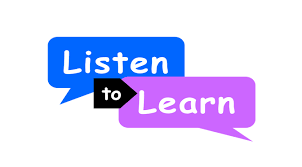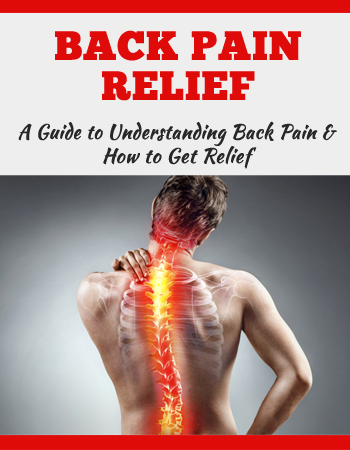If you want to be your own boss and take charge of your future, then starting an e-commerce business could be the best decision that you ever made. Consumers are increasingly buying products online and the tools and knowledge that you need to reach them are more accessible than ever.
There is never been a better time to start an e-commerce business than right now. For beginners, starting an e-commerce business can feel overwhelming. So this video will offer you a simple blueprint for starting one, that will take you from choosing a product all the way to making your first sale.
By the end of 2021 worldwide retail e-commerce sales will reach $4.9 trillion. And according to NASDAQ by the year 2040, as much as 95% of shopping will be facilitated by e-commerce. Needless to say the future free commerce is incredibly bright.
So if you want a slice of that pie, let’s get started. The first step to starting an e-commerce store is knowing what product you are going to sell direct to consumer. For many people, this is one of the hardest parts and a lot of would be business owners stop here, after becoming overwhelmed by the sheer amount of choices available.
Now, before we get to powerful techniques for finding profitable products, we need to lay our foundation by identifying the problem we are trying to solve. There’s no one way to do this, but here are some great ways to an earth product ideas.
Start by writing down a problem statement and brainstorm multiple products that could serve as a solution. For example, let’s say the problem was that many people find it more difficult to stay focused and productive while working from home.
Potential solutions could be a productivity journal, a desk organizer, blue light blocking glasses or noise canceling headphones. Now, once we have done this, it’s time to turn our attention towards the internet, to learn more about these markets and populate our list with more potential products.
Here are some great avenues for discovering products. Trend Hunter. As the world’s largest trend community, Trend Hunter uses data, artificial intelligence and real humans to identify consumer insights and new opportunities.
Then we have Reddit and as the front page of the internet, it showcases forums about pretty much every topic under the sun. Diving into niche specific subreddits can help you unearth some pretty interesting product ideas.
Social listening. This can be as basic as looking at trending hashtags on Twitter and topics on Facebook, or as advanced as using social listening tools like BuzzSumo to identify and monitor trends over time.
You can also gather inspiration by checking out what’s popular and trending on other marketplaces browse sites like Amazon Etsy and eBay, checking out their curated list and other categories that showcase current customer demand.
To make your life super simple, we’ve created a webinar on how to find and source winning products to sell. In this 40 minute webinar, you’ll learn everything you need from research to validation, to sourceing your products.
If you want to learn in a matter of minutes instead of in months, make sure to sign up and reserve your spot today. Now look at your product list. By now, it should be pretty substantial. Cross off any products that are too large or heavy is these are going to be pretty expensive to ship and are not a good place to start your e-commerce journey.
Cross off any products that are too fragile, or you stand the risk of losing money on refunds if the product breaks while in transit. Cross off any products that have excessive regulations, these will be a hassle.
Cross off any products that are perishable. This one is obvious. Cross off any products that are too easy to buy locally. Once you’ve done this, you should have a shortlist of products. And now it’s time to do some deeper research.
You see before investing any significant amount of time, money, or energy into your venture, you need to have a good understanding of the market. What is the competition like in the space and how much market demand is there? Don’t make the beginner’s mistake of building a business on a hunch.
To do this, run the products through Google trends. This will give you a good idea about how search interest is growing over time. The goal is to see if your product is trending upwards in interest. Be sure to check the geographical concentration of the searches.
This can help you identify where your customer base would be most heavily concentrated. And lastly, be sure to take note of seasonality. Does search interest dramatically change at different points in the year? This is something you’ll definitely want to know.
Next you’ll want to conduct keyword research on your product idea, using a tool like Google’s keyword planner. This will help you determine how many people each month are searching for keywords related to your product idea.
And it’s going to give you a good concept of how in demand it is. Next you should run the main keywords for your product idea through BuzzSumo to better understand how many people each day are talking about your potential product.
While these techniques do not give us complete certainty that these communities of interest are markets of buyers, they give us confidence that curiosity exists. The next thing you want to do to narrow down your product idea is run a competitor analysis.
This is where you see how your business would compare to other players in this space. The more you understand about the competitive landscape before you start your business, the less potential surprises you’ll face later on.
By evaluating the strengths and weaknesses of your competition. You can begin to formulate how you can give your company an advantage. To do this, simply run a Google search and take a look at the top ranking sites.
You can also use a tool like SEM rush to identify competitors at a glance. You see competition is good because it confirms there’s an existing demand for what you plan to sell. When conducting a competitor analysis, make sure to take note of these things who their target customers are, what market share do they currently own? What is their main differentiator or unique value proposition or unique value add for their business and products? What are the key features and benefits that they highlight in their sales materials? What are the price points for products across different marketplaces? How do they approach shipping? What are their marketing tactics? What is their social media engagement and what social channels are they using? Have they received any funding or venture capital and take a look at their customer reviews.
Specifically, look at the language used around products and any recurrent complaints. Make sure not to skip this step. It’s impossible to differentiate yourself as a business without knowing who your direct competitors are and what makes you different.
By now you should be able to narrow down your product idea to one standard product that not only has data to back it up, but resonates with you as a founder. Now, as I stated earlier, interest doesn’t always translate to sales.
Real product validation only happens after money changes hands. If you can try to make some initial sales, that is definitely the best way to know you are fulfilling a genuine need. For example, if you were to sell handmade jewelry, you can sell in person at a craft show or listed on a marketplace like Etsy for some product ideas.
This will obviously be a lot more difficult, especially if your product requires a significant investment to get to market. So here are two other options for validating your idea. Test the market by building a landing page to promote your potential product.
Run a few paid ads to drive traffic and then capture the emails interested customers. Another way is to create a crowdfunding campaign. And this is a proven way to test demand. If your campaign is successful, you’ll be in an excellent position to transition into a sustainable business, by leveraging the audience you built through your efforts.
Crowdfunding. To succeed, you’ll need a firm timeline and a lot of focus to reach your goal. I’m going to post a link to a Shopify article below that will tell you everything you need to know about crowdfunding.
Once you have validated your product idea, your next step will be creating a plan to obtain your products. Now, there are four popular ways to obtain products for your e-commerce business. Each with its own pros and cons.
Making your own products is a common approach for hobbyists giving you precise control over quality and your brand while keeping startup costs low. Now, whether you’re making physical goods like beauty products or creating digital products like an online course, this is a great option for the do-it-yourselfer.
However, it does have its drawbacks. There will likely be a large time commitment. And if you’re selling digital products, you can have issues with scalability. Another viable option for acquiring your product and inventory is to find a manufacturer to produce the product for you.
You’ll have the option of choosing a domestic manufacturer or finding a less expensive manufacturer overseas. Manufacturing your product is a good idea for those people that have a unique idea or a variation of a current product idea that doesn’t exist currently.
Now it’s for people that have definitely validated their market for their product and found significant demand. This is super important, as manufacturing will require the greatest financial investment upfront.
Domestic directories, like Thomas net and maker’s row and international directories, like Alibaba are great places to find manufacturers. Buying wholesale is a lower risk business model compared to manufacturing for a few reasons.
First you’re dealing with brands that are already validated. Also, you don’t have to purchase nearly as high a quantity compared to manufacturing your own product. Now purchasing products wholesale is a good option if you want to get up and running quickly, or if you want to sell a variety of products and brands, one thing that’s important to note here is that these products won’t be exclusive to you.
Directories like worldwide brands and sales who are great places to find wholesalers. Drop shipping is by nature the cheapest option to get started, therefore drop shipping is for people that would prefer to keep start-up costs as low as possible and are less concerned about margins and customizability directories like Oberlo and Ali express are great places to source products to drop ship.
For everything you need to know about starting a drop shipping business, check out the detailed video that we’ve already made on this subject. With your competitive analysis and knowledge of how you’ll obtain your product.
It is time to write a business plan. A business plan is a roadmap that will help align your efforts and give you focus. Knowing which actions to prioritize is vital to building a successful business. Business plans help you clarify your strategy, understand what resources you need and understand potential roadblocks.
A business plan is a document describing a business, its products or services, how it earns or will earn money, it’s leadership and staffing, it’s financing, it’s operations model, and many other details that are essential to its success.
Now a lot of people dream about building a successful brand, but the reality is most people just don’t know where to start. So to make your life super simple, we’ve created a handy template that will take you step-by-step through everything you need to accomplish to create an amazing brand.
The difference between those who succeed and those who don’t is that they act on knowledge. So make sure to download this template and fill it out. It’ll be your first step towards your entrepreneurial journey.
A business plan will have these vital components. Executive summary, write this section last as it really is a high-level overview of your business plan, and is a condensed version of your most important information.
Next, we have the company overview. This section of your business plan should answer two fundamental questions. Who are you, and what do you plan to do. Include your mission, values, company structure, objectives, key staff members, and what you sell.
Then we have market analysis, and this should show how big you estimate the market for your products is. It should include an analysis of your business’s position in the market and an overview of the competitive landscape.
You’ll need to use research to back this up with hard data. Products and services. This part is fairly straightforward. Simply provide detailed information on the products you intend to sell, including where they are sourced from.
In the section, you’ll want to include how your products are different. Key attributes for differentiation are price, design, and function. Customer segmentation. One of the worst mistakes beginner entrepreneurs often make is believing they can sell to everyone.
The reality is is you can’t afford to market to everyone. Not even if you have a great product, that’s why this is where you include information on your ideal customer. It should answer where they live common behavior patterns, their beliefs, values, and opinions, how much they earn and where they spend their free time.
Next, we have the marketing plan. Your marketing plan is one of the most important parts of your business plan. A marketing plan should outline your current decisions and how your future strategy will unfold with a focus on how your ideas are a fit for your ideal customer.
Here’s what it should include, how much your products cost and why, what problem you are solving and how you are solving it. What is different about your brand and product from your competitors? How will you get your products in front of your ideal customer? What marketing channels will you use and where will you sell your products? Then we have logistics and operations.
And this is the part of your business plan, where you will discuss processes that will make your big plans a reality. In this section, you will want to know who will your suppliers be? How much inventory will you keep? How will you ship and fulfill your orders? And what tools will you need to keep up and running? The last component is the financial plan.
Now it goes without saying that businesses live and die by their financial feasibility. So take some time on this part. The most vital components of a financial plan are the income statement, the balance sheet, and the cashflow statement to help you understand this in more detail and also to get you started, we’ve created a beginner’s guide to cashflow management, which I’m going to link right here.
Once we have our business plan in place. Now it’s time to start building our brand. In e-commerce choosing a great name is vital to building a memorable brands. There’s no doubt that choosing a name can sometimes feel frustrating as it can seem like all the best names are already being used.
There’s definitely no one way to come up with a great name, but a naming tool like Shopify’s name generator or brainstorm sessions with people that you trust can be great ways to come up with ideas. Now, if you’re stuck for name, another great option is by crowdsourcing a name on a platform like namingforce.
com. It can be a really cost effective solution. Make sure when choosing a name that you check to see if the domain is available, try and choose a name that has a .com available, as a top level domain signals trust to potential customers.
Once you’ve chosen a name and secured your domain, you will need to get a logo designed. Take this seriously. As logos are a point of recognition for customers and can inspire brand loyalty. A good logo is simple, memorable, enduring, versatile, and business appropriate.
Online logo makers like hatchfull are a great place to start. If you’re looking to save time and money. However, if those aren’t large concerns hiring a professional designer through Fiverr or Upwork will help you create something that is completely unique to your business.
If you’re looking to create a serious business, it’s important that you invest time and money into making your business legal. The reason for this is that some suppliers won’t actually work with you if you’re not a legally registered business.
Not only that, but you can create a lot of tax headaches for yourself later down the line. If you don’t set your business up properly from the get-go. Now since I’m not a lawyer and every business is completely different.
I’m just going to give you a high level overview of the most important steps in making your business legal. First, you need to decide on a business structure. Second legally, register your business. Third, setting up a business checking account and credit card, and lastly, learn and abide by the regulations for collecting sales tax based in your region.
Search engine optimization is a process by which websites and content are created and enhanced in a way that makes finding them on search engines like Google easier. Before you dive into creating a website, you’ll need to have a basic understanding of SEO in order to structure your site properly.
As it’s really going to affect how easily search engines can find your products in your store. It’s important that you take the time to get this right from the start. Now, SEO is a pretty deep topic. So to give you a better understanding, we have created a separate video, which you can see here.
Once you have a basic understanding of SEO, it’s time to get started building your store. Now, if you plan to use Shopify, the theme store gives you access to premium designed e-commerce website templates at a really affordable price.
I really recommend this option as it’s a lot more cost effective than hiring a designer, and it will be the quickest way to get your store live. When building your store, here are some things that you should really keep in mind.
Write brand copy that communicates brand values and speaks to your ideal customer. Write product descriptions that entice customers with product benefits. Take high quality, beautiful product photography.
You don’t need to have thousands of dollars in camera equipment to make beautiful photos. Check out our video that shows you how to take really great photos on your cell phone. Your website design can have a huge impact on your SEO.
As a best practice, make every product page as few clicks from your homepage as possible. Your page design can also have a huge impact on your conversions. Design your pages with simplicity in mind, trying to weave your brand’s DNA into the page, so that at a glance, a visitor knows exactly what you’re about.
Use social proof, social proof adds credibility and definitely boosts conversions. Reviews, photos from Instagram and first-person testimonials are a great way to build trust and encourage purchasing behavior.
Now let’s talk about shipping before you make your first sale. It’s incredibly important that you map out a defined shipping strategy. Here are the most basic things that you need to know. Number one is who pays for shipping? Are you going to pass the full cost of shipping onto customers? Will you offer free shipping or will you offer flat rate shipping? There’s pros and cons to all of these, but you need answers.
Shipping rates and methods are the next thing that you need to keep in mind. Calculating shipping cost depends on a variety of factors, such as package size, package, weight, origin country, destination country, carrier, additional shipping options like tracking and insurance.
Luckily, Shopify makes this a lot more simple. If you’re based in the US or Canada, you can pay for USPS, Ups, DHL express, and Canada Post shipping, right through Shopify and receive pre-negotiated rates.
Next thing is sourcing your packaging. You can order free packaging from USPS, Ups or DHL or invest in branded packaging. One thing that’s really important to consider with e-commerce is that packaging is a part of the customer experience, which is central to the overall brand experience.
People do unboxing videos for a reason. Then, of course we have customs declarations and forms. If you’re shipping outside of your own country, you’ll need to include the proper customs documentation.
Check with your country’s postal service to find out exactly which forms you need to attach to your package. Next we have labeling. Many new e-commerce entrepreneurs start off by writing the ship to and return addresses on the package by hand.
Although this can be a great way to start. It tends to be pretty time consuming, tedious, and not scalable as your business grows. Shopify shipping happens to solve this problem, allowing you to print and pay for multiple shipping labels directly in Shopify.
Lastly we have fulfillment warehouses. Shipping is undoubtedly one of the more challenging aspects of starting an e-commerce business. Fulfillment warehouses help simplify this process by automating and handling the shipping for you.
They accomplish this by keeping part of your inventory at their warehouse. Fulfillment warehouses can help you get cheaper shipping rates and shorter shipping times, but it’s going to come at the cost of customizability.
Now that you’ve launched your store, the work of marketing your products begins. It’s time to make some sales. Now the goal of digital marketing is to drive targeted traffic to your site. Here are some effective digital marketing

strategies.
First we have paid advertising. Paid ads allow you to target users based on demographics, interests, and traits to serve ads, to prospective buyers that can turn them into paying customers. Now, while this does require budget, and there is a bit of a learning curve, paid ads can be one of the fastest ways to acquire customers.
When it comes to the world of online advertising, Facebook ads and Google ads are among the largest providers of paid traffic. Next we have influencers sponsorships. If you have a marketing budget, one of the quickest ways to get your product or brand in front of a relevant audience is by paying someone with an online following to promote it for you.
This involves finding influencers that have an active, engaged following who would be interested in your product. They also need to have the creative ability to produce content that reflects well on your brand.
Then we have building an email list and this involves generating leads by collecting information from potential customers in order to nurture them or retarget them with ads that will eventually convert them into a customer.
There are plenty of ways to build an email list from driving paid traffic to a page with an email capture to offering a welcome discount on your website for new subscribers, email lists can be one of your most valuable assets as a business owner.
Of course, we have search engine optimization. When looking for a product or service, many consumers begin their search on a search engine like Google. Doing keyword research and implementing your findings into a content strategy for website pages and blog posts can really help you climb in Google’s rankings, which can bring you a lot of search traffic filled with potential customers.
Then we have social media marketing. Social media is such a powerful tool for reaching new customers, building brand authority, and creating an audience that can help you consistently make sales. While each platform is unique, they all follow the exact same principles.
You need to create content that is relevant and valuable. You need to collaborate with other social media accounts to broaden your reach and you need to post consistently to get recognized and figure out what works and what doesn’t.
Now the subtopics of marketing, shipping, operations, finance, and basically everything we discussed here today are huge topics with tons more to learn. Consider this video a roadmap to e-commerce guiding you towards the most important things you need to learn about further to create a successful online business.
Make sure to subscribe to our channel because we’re going to be doing some deep dive on each one of these topics. Hopefully this video has given you a blueprint to help you start your e-commerce journey.
Let us know in the comments, what other videos you’d like to see and we’ll make it happen. Also, don’t forget to like and subscribe, so you don’t miss out on more tips to grow your online business. Remember, we’re a channel for small business owners with big plans.
======================
All Things E-BUSINESS & E-MARKETING will help you in adding more methods for your business and marketing needs. While Business, or the act of conducting trade has been around since the beginning of Man. When we look to create business online, E-Business becomes a phrase or way of looking at it. No longer are boundaries necessary; and the World has become a smaller place with Worldwide Shipping and translation services bridging the communication and delivery issues of old.
FREE BITCOIN MINING: This is one of the best GIFTS we have on our site. Simply go here to get started with some Free Bitcoin just for registering. Then (all 100{6a1d981a5882880c4c624e1a138e138501316201a374dac6cdbe374c40a6dee6} free) you (and your loved ones) will be able to Mine Bitcoin. All super easy through this first ever “Smart Miner” application to literally earn Bitcoin through Mining. Super Easy, Super Exciting. As Bitcoin becomes more and more valuable, how much do you want? Go here to get it for FREE and be able to EARN with mining from your Computer 24 hours a Day. Get in the Bitcoin Craze (ALL FREE) Here:
Get Paid to Chat: Not only is this the most secure Online Chat Program on the planet but it is replacing video chat. Superior technologies and based upon a platform to help better the World. Initiatives to end poverty and to increase the quality of life are also part of this incredible service. Get the details and be a part of the solution here:
TippingCircle: Probably the most incredible online banking tool of our time. With access to Reward Points, Cash, Bank and PayPal Integration. We are using this as a vehicle in our “Performance Giving Network” to help end Poverty in the World. See the Details Here:
Thank you for stopping by All Things E-BUSINESS & E-MARKETING. Clearly we rely on the Internet, Social Media Services, Mobile Applications and eCommerce tools. The more we need to be tied into the cutting edge services and providers. This is what you will find when you go to the above resources.










